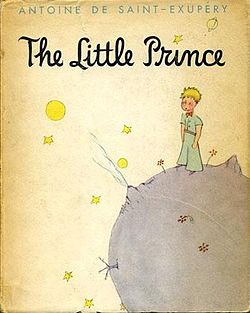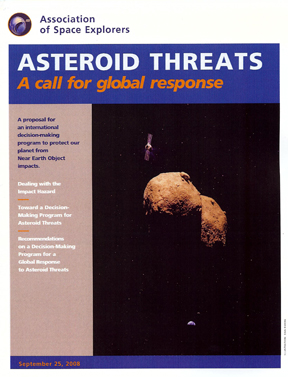Text of my ‘When Worlds Collide’ column published in Ceylon Today Sunday newspaper on 17 February 2013
See also column on 23 Dec 2012: Avoiding the ‘Mother of All Tsunamis’
Follow up column on 3 March 2013: When Worlds Collide #56: Communicating for Survival – Who will save Earth?
Sometimes it takes a dramatic event to open the world’s eyes to certain hazards.
The meteor that exploded in the skies over Chelyabinsk, in Siberia, Russia, on 15 February 2013 is now being seen as a ‘wake-up call from outer space’.
The object’s size, before it broke up in the atmosphere, has been estimated to have been around 17 metres (55 feet), weighing around 10,000 tons. Scientists believe that some 500 kilotons of energy was released – which makes it 20 to 30 times more powerful than the atomic bombs exploded over Hiroshima and Nagasaki.
Fortunately, no one was killed, even though infrasound waves shattered glass in a large area and injured over 1,000. It was the largest such event to have occurred since 30 June 1908, when a bigger space object exploded over Tunguska, also in Siberia.
By pure coincidence, Asteroid 2012 DA14 – three times larger than the Siberian meteor, the size of a large bus – passed by the Earth on the same day on a significantly different path. It came 27,700 km (17,200 miles) above Earth’s surface at the time of closest approach. The two incidents were not related.
Unlike the Siberian meteor, Asteroid 2012 DA14 posed no danger of collision. It was detected nearly one year ahead, and closed tracked since by astronomers.
Earth-threatening objects
How come scientists didn’t see the Siberian meteor coming?
There are just too many — literally millions – pieces of space rock in space, making it difficult to keep track of them individually.
Thousands of pieces of cosmic debris enter our atmosphere every day — most are burned up before hitting the ground (producing harmless ‘shooting stars’). Larger pieces that crash-land are called meteorites. Even then, average ones are too small to cause much damage.
Once in a while, a large enough piece comes along — as did on February 15 – which can be an asteroid or part of a comet. Called Near Earth Objects (or NEOs), some of these may pose an impact danger.
Astronomers constantly scan the skies to find NEOs long before they hit. The effort, which involves telescopes and teams around the planet, is aptly called the Spaceguard – a term coined by Arthur C Clarke 40 years ago in his science fiction novel Rendezvous with Rama (1972).
During the past 15 years, over 10,000 NEOs that pass close to Earth have been found and they are all being tracked. NASA maintains what is called a ‘Sentry Risk Table’ – a listing of potential future Earth impact events spanning the next 100 years. http://neo.jpl.nasa.gov/risk/
The good news is that astronomers know of no asteroids or comets that pose a major threat to our planet. But worryingly, NASA estimates that less than 10% of NEOs have yet been discovered. Earth-based telescopes, currently used in such surveillance, have reached their physical limits.
Several high-level expert groups have recommended placing an infra-red space telescope into a Venus-like orbit around the sun, to help discover most of the Earth-threatening smaller asteroids that cannot be detected from terrestrial observations.
Why bother if we are like sitting ducks in a shooting gallery, dodging disaster with sheer luck?
Russell “Rusty” Schweickart, former NASA astronaut and now a leading spaceguard activist, says: “If we have adequate early warning, our current space technology is sufficiently advanced to deflect these asteroids. For smaller impacts, even a last-minute warning of several days could enable a local evacuation and save many lives.”Very Early Warning
This is one hazard where early warnings can come pretty early – if detection and assessment are systematic and comprehensive.
“Fortunately, due to the relatively pure nature of space dynamics, forecasting an asteroid impact 100 years in advance is possible once its orbit is well known,” says Schweickart, who chairs the International Panel on Asteroid Threat Mitigation appointed by the Association of Space Explorers (ASE).
In 2008, the panel – which includes astronauts, astronomers and astrophysicists from around the world – prepared a report to the United Nations. It was titled Asteroid Threats: A Call for Global Response.
The report cautioned: “A future asteroid collision could have disastrous effects on our interconnected human society. The blast, fires, and atmospheric dust produced could cause the collapse of regional agriculture, leading to widespread famine.”Faced with such a threat, the reported added, we are far from helpless.
“For the first time in our planet’s 4.5-billion-year history, the technical capacities exist to prevent such cosmic collisions with Earth. The keys to a successful outcome in all cases are preparation, planning, and timely decision-making.”
This places asteroid-hunting astronomers in the first line of planetary defence. The study of heaven bodies does not sound so esoteric after all.
Detection is only the first step. The panel believes that existing space technology makes possible the successful deflection of the vast majority of hazardous NEOs.
Even a large NEO on a direct collision course with Earth could be warded off with a relatively modest ‘nudge’ – if that deflection happens far enough in space. In this game of cosmic billiards, time makes all the difference.
Hence their appeal: “The international community must begin work now on forging three impact prevention elements – warning, deflection technology and a decision-making process – into an effective defence against a future collision.”
ASE – whose members are astronauts and cosmonauts — has recommended that the world’s space agencies, working with the UN, together should conduct a thorough search for hazardous asteroids using new telescopes, sharing the results globally.
ASE has also urged “a mission planning exercise to find the best methods of asteroid deflection”. They suggest an international deflection mission be undertaken to practise moving a small, harmless asteroid.
Insurance for Earth
Who should pay for all this? And should taxpayer money be diverted for such pursuits when there are more pressing survival issues on Earth?
This has always been a contentious issue. In this instance, the funding needed runs into hundreds of millions of dollars, not billions as Moon landings and the space shuttles did. A relatively modest sum to pay as an ‘insurance premium’ for humanity…
But recession-hit governments of space-faring countries have been slow to invest funds. This has prompted large corporations and advocacy groups to step into the void.
 Leading the charge is the B612 Foundation, a non-profit whose name was inspired by the famous children’s book ‘The Little Prince’ by Antoine de Saint-Exupéry. (B612 was the imaginary asteroid home of the protagonist.)
Leading the charge is the B612 Foundation, a non-profit whose name was inspired by the famous children’s book ‘The Little Prince’ by Antoine de Saint-Exupéry. (B612 was the imaginary asteroid home of the protagonist.)
In June 2012, the foundation announced plans to build, launch and operate an entirely privately-funded infrared space telescope called Sentinel. To be launched into a solar orbit in 2018, the instrument would peer out toward Earth’s neighborhood without having to contend with the sun’s overwhelming glare.
“Sentinel will create the first dynamic map of our inner solar system and protect life by finding asteroids before they find us,” the foundation says. It currently appeals for donations to finance the mission, estimated to cost USD 450 million over 6.5 years.
“By the end of its planned lifetime, Sentinel will have discovered well over 90% of the asteroids that could destroy entire regions of Earth on impact (those larger than 350ft in diameter) and more than 50% of the currently unknown DA14-like near-Earth asteroids,” says B612′s co-founder and Chair Emeritus Rusty Schweickart.
Improving early detection is necessary, but not sufficient. If a NEO hazard is confirmed, but is years or decades ahead, how will governments respond – given their usually short time horizons? Watch this space…
Follow me on my blog: http://nalakagunawardene.com, and on Twitter: NalakaG





Reblogged this on Moving Images, Moving People!.
I was delighted when astronaut Russell Schweickart himself commented on a blog post of mine in December 2008, shortly after the ASE Report he co-authored came out.
See: “Early Warning for Planet Earth: How to avoid mother of all Tsunamis!”
Pingback: When Worlds Collide #56: Communicating for Survival – Who will save Earth? | When Worlds Collide, by Nalaka Gunawardene
A standard shipping containor is 40 feet in length and including another 10 feet for Front end, the asteroid that struck Russia is about the size of a semi trailer or large Bus. 2012 DA14 at 45 meter or 150 meters is very much larger.
The media seems to have forgotton the meteor that struck Brazil on 1930 Aug 13 which according
to most estimates was much larger than the recent event in Russia
http://star.arm.ac.uk/impact-hazard/Brazil.html